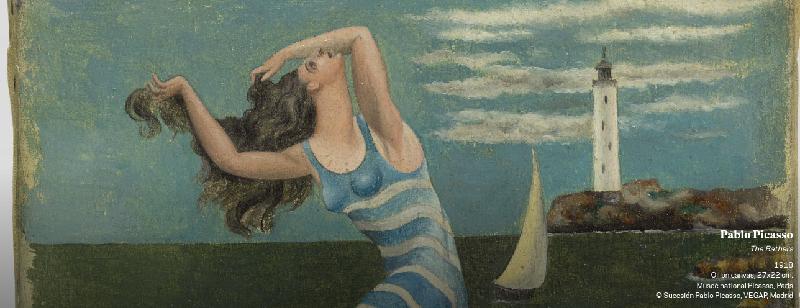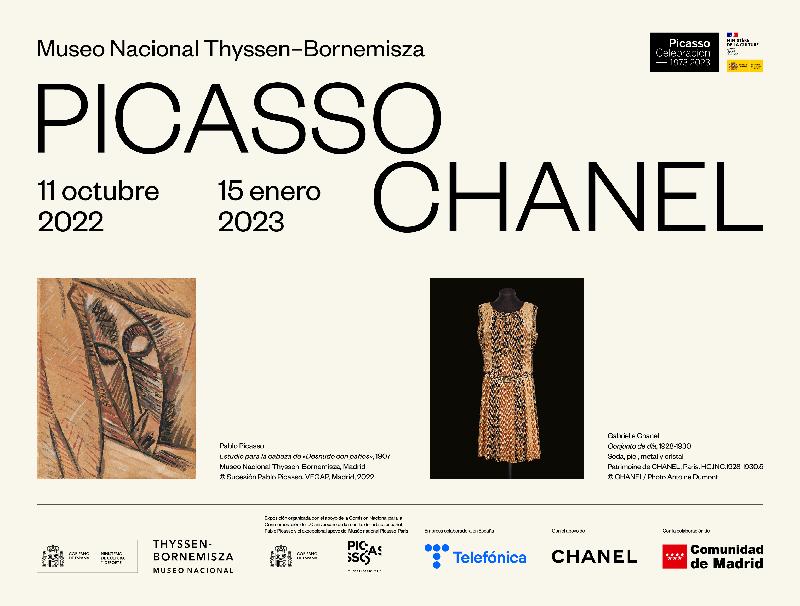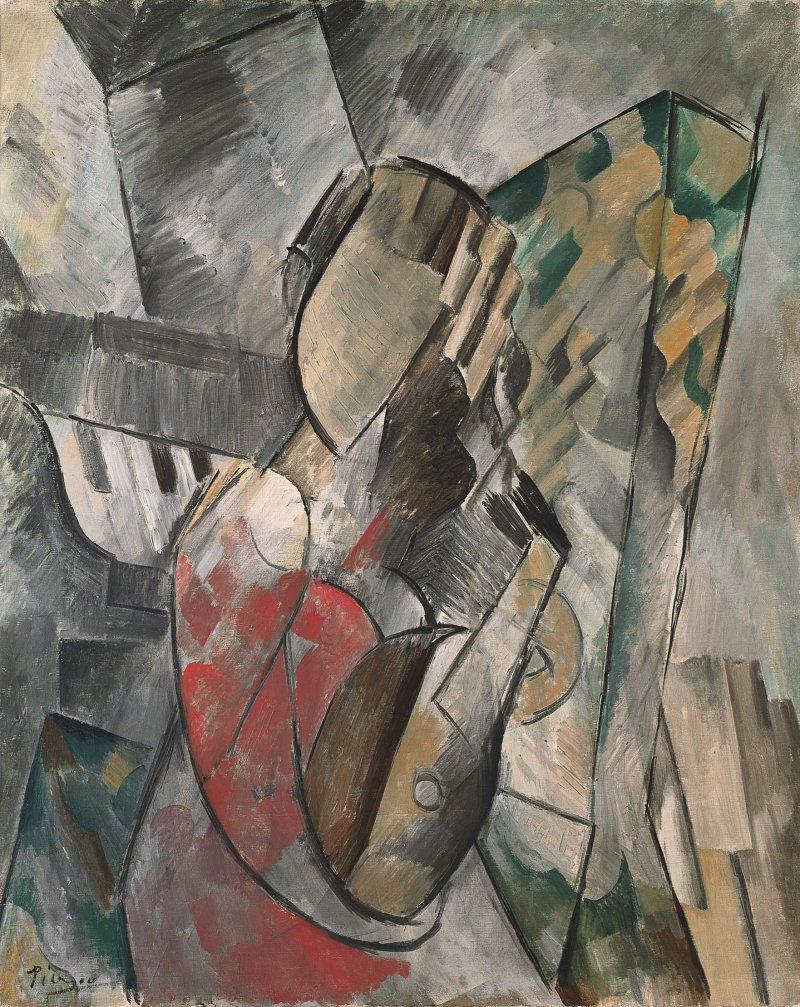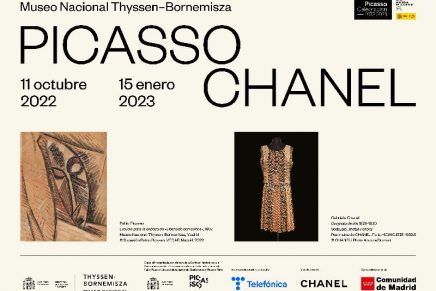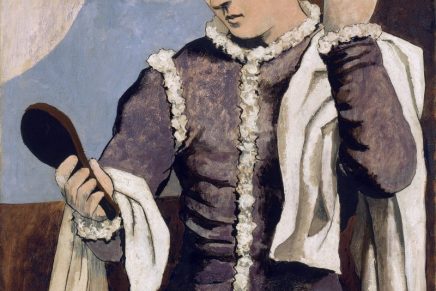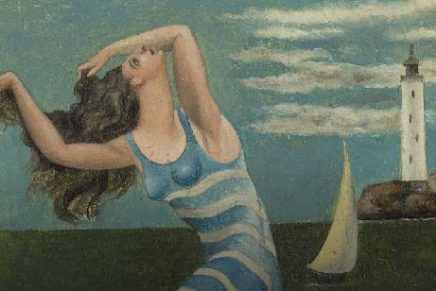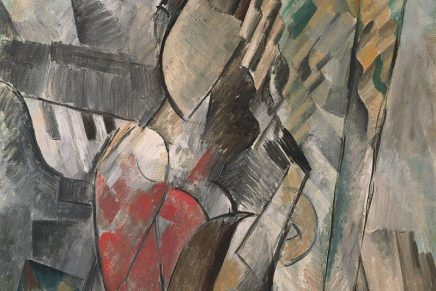Picasso/Chanel exhibition is bringing art and fashion together.
Picasso/Chanel exhibition commemorates the 50th anniversary of the death of the Spanish artist Pablo Picasso. CHANEL supports the exhibition ‘Picasso/Chanel’, highlighting the relationship of mutual admiration and respect between these two major figures of modernity. From October 11th 2022 to January 15th 2023 at the Museo Nacional Thyssen-Bornemisza in Madrid.
“Picasso and Chanel coincided in a particular time and place but, more importantly, they shared the same aesthetic and conceptual vision” – Paula Luengo, curator of the exhibition.
Once again bringing art and fashion together, the Museo Thyssen in Madrid, Spain is presenting an exhibition that explores the relationship between two creative geniuses of the 20th century: Pablo Picasso and Coco Chanel. Structured into four principal sections, Picasso/Chanel exhibition follows a chronological order approximately spanning the decade between 1915 and 1925.
Pablo Picasso and Gabrielle Chanel worked together on two occasions, both with Jean Cocteau: on Antigone (1922), and on Serge Diaghilev’s Le Train Bleu (1924) for his Ballets russes. The artist and fashion designer first met in the spring of 1917, probably through Cocteau or Misia Sert, and Chanel became close and long-lasting friends with both, who introduced her to the Picasso’s circle. She socialised with the artist and his wife at a time when he was actively involved with Diaghilev’s company. Chanel became closely associated with the Parisian artistic and intellectual world of the day, to the extent of declaring that “it is artists who have shown me how to be exacting.”

Gabrielle Chanel Dress 1923-1926, Silk crepe, beads, and rhinestones ; Patrimoine de CHANEL, Paris; © CHANEL
The Chanel style and Cubism reveals the influence of that art movement on Chanel’s creations from her earliest, innovative designs: her use of a geometrical formal language, chromatic restraint and the Cubist aesthetic of the collage, expressed in clothes with straight, angular lines: her preference for black, white and beige; and her use of inexpensive fabrics with austere textures.
The second section, entitled Olga Picasso, focuses on Picasso’s numerous, beautiful portraits of his first wife, the Russian ballerina Olga Khokhlova who was one of Chanel’s devoted clients. Shown alongside these works are various ensembles from the designer’s early period, of which few examples survive. Antigone, a modern-day adaptation by Cocteau of Sophocles’s play, was first performed in Paris in 1922 with sets and masks by Picasso and costumes by Chanel, both of whom were inspired by classical Greece, as this section reveals.
Le Train Bleu is the title of the fourth section and of the ballet created by Diaghilev in 1924 with a scenario by Cocteau, inspired by activities that were fashionable in the early 1920s, such as sunbathing and sport. Two Women Running along the Beach (The Race), a small gouache which Diaghilev encountered in Picasso’s studio, was transformed into the image for the work’s front cloth and the artist also accepted the commission to illustrate the programme. For her part, Chanel created costumes for the dancers, inspired by the sport outfits she created for herself and for her clients.
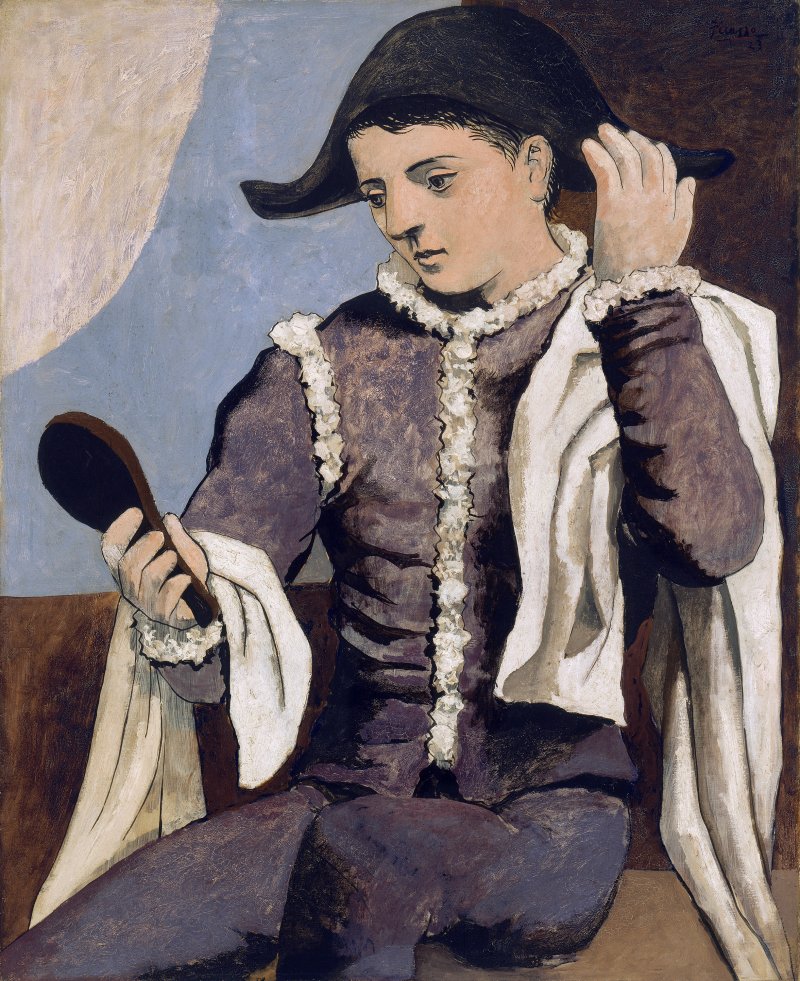
Pablo Picasso Harlequin with a Mirror, 1923, Oil on canvas. 100 x 81 cm Museo Nacional Thyssen-Bornemisza, Madrid © Sucesión Pablo Picasso, VEGAP, Madrid

Gabrielle Chanel Day dress, ca. 1922 , Silk, crêpe de chine, and ermine fur Staatliche Museen zu Berlin, Kunstgewerbemuseum; ©Kunstgewerbemuseum, Staatliche Museen zu Berlin – PreuBischer Kulturbesitz, Berlín
Lecture cycle Picasso/Chanel (Lecture. 16, 23 and 30 November 2022)
In conjunction with the exhibition Picasso/Chanel and in collaboration with Patrimoine de CHANEL, Paris, the Thyssen-Bornemisza National Museum is organising a cycle of three lectures devoted to Gabrielle Chanel and her relationship with Pablo Picasso. Following their initial encounter around the premiere of the ballet Parade in 1917 the two collaborated on Jean Cocteau’s adaptation of Sophocles’ classical drama Antigone in 1922 and subsequently in 1924 on Cocteau and Serge Diaghilev’s ballet Le Train Bleu.
Paula Luengo, the exhibition’s curator and head of exhibitions at the museum, will launch the cycle with a lecture in which she discusses her research on Picasso and Chanel and the development of this project. The other two lectures will be given by Hélène Fulgence and Marika Genty, director and head of historical heritage of Patrimoine de CHANEL, Paris, respectively.
Chanel also announced a fragrance exhibition coming soon to Paris: LE GRAND NUMÉRO DE CHANEL.
Spectacular scents, marvelous magic tricks, unexpected discoveries, highly anticipated encounters and many other sensational acts: Don’t miss LE GRAND NUMÉRO DE CHANEL, running from December 15, 2022 to January 9, 2023 at the Grand Palais Éphémère in Paris, France.

